2016 Harley-Davidson Roadster First Ride Review

Vive la différence!
A freight train of 20 motorcycles works its way through the rolling hills of southern France on a roller-coaster of silky smooth but undulating pavement, cresting hills, strafing banked turns, and dancing side-to-side through endless esses. Entering the mostly second-gear corners, bikes largely nose-to-tail, the riders take a variety of lines, occasionally scrubbing off a little speed mid-corner – or sometimes more than a little in the case of a sneaky decreasing-radius – with a judicious application of brakes while leaned over, peg feelers just skimming the pavement. Other times, if the situation requires, they adjust their lines, sometimes slightly overlapping wheels as people who are comfortable on the track often do (even if it doesn’t really allow enough margin for error on the street). Then the corner ends, and the throttles twist, widening the gaps slightly, only to accordion back together in the next braking zone.
2016 Harley-Davidson Roadster
| Engine | 16.5/20 |
| Suspension/Handling | 12.5/15 |
| Transmission/Clutch | 8.0/10 |
| Brakes | 9.0/10 |
| Instruments/Controls | 4.25/5 |
| Ergonomics/Comfort | 7.0/10 |
| Appearance/Quality | 9.25/10 |
| Desirability | 8.5/10 |
| Value | 8.0/10 |
| Overall Score | 83/100 |
2016 Harley-Davidson Dark Custom Iron 883 And Forty-Eight – First Ride Review
While the scenario may sound like the typical sportbike press introduction, this was, instead, a swarm of Harley-Davidson motorcycles – primarily the just announced Roadster with a smattering of Low Rider S models thrown in for good measure. The road in question was the perfect culmination of three days of riding along the coast and in the mountains between Marseilles and St. Tropez and back again.
At first blush, the location for this riding introduction of the Roadster seems a bit odd for the uniquely American manufacturer. However, once you learn that the Iron 883 and 1200 Sportster-based Forty-Eight are the top-selling models in Europe following the model year 2016 updates, the location begins to make sense. (In an interesting side note, European Harley sales are the inverse of those in the United States, where touring bikes account for the vast majority of U.S. sales.) Next, consider that a roadster is a bike which has been pared down to its bare essentials, trimmed of any fluff.
The origins of the roadster go back to the days of true home-grown performance where the owner would take off every non-essential bit – even resorting to drilling out parts to lighten those that remain – because subtracting weight increases effective horsepower. Suspension components on roadster conversions were upgraded for better handling. Finally, a lower handlebar, a solo seat, and even rearsets were fit to put the rider in a sportier position. In the creation of the Roadster, Harley has essentially followed the same steps, but at a factory level.
While the engine and the frame remain standard issue 1200 Sportster items, the components mounted at either end have been upgraded. The gas-charged emulsion twin shocks bump their travel to 3.2 inches which, while still on the relatively short side, still amounts to a 0.7-in. increase. The coil-over shocks’ preload adjustment is handled by a screw-style adjuster. On the other end of the frame, a beefy triple-clamp grips a stout 43mm inverted fork with cartridge – rather than low-tech damping-rod – internals and a relatively generous 4.5-in. stroke.
The additional front-end stiffness is appreciated when the more powerful front brakes come into play. While the disc size remains 300mm, the power is doubled by having a second one mounted on the other side of the front wheel. The calipers are the same two-piston design previously used. ABS is, oddly, a $795 option in the U.S., while all EU-destined Roadsters come with it standard.
The suspenders don’t just affect the quality of the ride; they also alter the steering geometry. While the angle of the frame neck remains the same, raising the back of the bike with the longer shocks rotates the frame orientation, having the effect of shortening the rake. The Roadster’s 28.9° rake versus the Forty-Eight’s 30.2° illustrates this on the spec sheet, and the number translates into more responsive steering on the street – even with the 19-inch front wheel mounted. Although the steering has been quickened a bit, the 5.5-in. of trail means that it is still as stable as ever at speed.
While the larger front-wheel size will affect handling by slowing steering, the weight of the wheels plays multiple roles, performance-wise. The offset-split 5-spoke cast aluminum wheels are lightweight items (for a Sportster), and a wheel’s rotational mass influences both acceleration and turning. As always, lighter is MO better.
In response to the inevitable comments about the number of spokes shown in the photos: Yes, it looks like there are 10 or 20 spokes, depending on how you count them. The key words are “offset-split” in this situation. So, if you look closely at one side of the wheel, you’ll see how pairs of spokes connect via a U at the rim. There are five Us on either side of the wheel, accounting for the split. Next, the Us are rotated about 18° on the wheel for the offset portion of the name. That’s the logic behind the name, but you don’t have to agree with it. (Our opining is split in the naming issue, but we feel it is more than offset by the cool look of the wheels.)
The rider interface with the Roadster is essential to both the experience of piloting the bike and its road-going ability. First, the increase in the shocks’ length raised the seat height to 30.9 in. (compared to 27.3 in. on the Forty-Eight). While that still seems low compared to most sporty bikes and many standards, shorter-legged riders will also have to contend with the width of the 1202cc Evolution engine which increases the effective seat height. The mid-mount pegs are much more practical for spirited riding than forward-mounted ones, but when combined with the beaminess of the engine’s bottom end, the rider’s foot placement splays the legs widely. Additionally, at a stop, the pegs are located where riders would naturally place their feet, meaning that a pants leg can occasionally get caught on the peg. Locating the pegs further rearward would likely eliminate this issue while also increasing cornering clearance.
The handlebar placement also exhibits similar compromises, though it is more easily addressed through the aftermarket. The Roadster’s bar places the rider’s hands about an inch above the triple clamp, causing the torso to naturally cant forward. At highway speeds or on a winding section of road, this position is ideal for combatting the wind and commanding the Roadster to do your bidding. Around town, particularly at low speeds, the grip position can be awkward. While I was not bothered by the grip location (with the exception of during U-turns where the bar would hit my knees), some of the other journalists said they would fit a slightly taller bar – perhaps even the standard Sportster’s – though I wouldn’t make this change.
The final corner of the rider triangle is represented by the seat. The pilot’s portion is comfortably flat with a pronounced curve in the rear, giving both a sporty, gunslinger look and a practical application by preventing the rider from sliding rearward under acceleration. Though surprisingly firm, the seat remained comfortable over the three days of riding. The pillion’s accommodations look like it would be fine for short rides.
As with the seat, the rest of the 1200 looks the part of a roadster. The chassis stance is less rearward angled, thanks to the longer rear suspension, but the larger-diameter wheels (19-in. front and 18-in. rear) with their lower profile tires give a dramatically different look when compared to the Forty-Eight. While the peanut tank still gives the profile a rearward-sloping angle, the Roadster has less squat in the rear for a more muscular, slightly forward-leaning appearance.
The blacked-out look of the wheels, suspension, and most of the engine only adds to the purposefulness. Still, the chrome accents of the pipes and pushrod tunnels combine with the matte grey of the air cleaner to bring out some detail to the engine. Fenders, front and rear, are abbreviated in a suitable sporty manner – although the rear of the Euro-spec models in the photos have the bobbed effect minimized in the rear because of the required fender and license plate holder. The U.S. model has the plate mounted to the left side for a cleaner fender tip.
For anyone familiar with the 1200 Sportster, riding the Roadster is immediately familiar. Although the seat is significantly higher and the rider sits up on the bike rather than in it, the 1202cc Evolution engine is untouched from other models. It’s 88.9mm x 96.8mm cylinders still pump out a claimed 76 lb-ft at 3750 rpm. The last 1200 Sportster we tested produced 67.6 lb-ft at its rear wheel; horsepower was about 62 ponies. The non-adjustable clutch lever is relatively far from the grip and the beefy pull required will butch up your left forearm if you commute on the Roadster regularly. That said, the clutch is easy to modulate, and the EFI is relatively glitch-free.
2015 Harley-Davidson Sportster 1200 Custom Review
Spirited riding points out both the strengths and the flaws of the 1200 as a sporting ride. The torque comes in early, providing grunt, but the engine revs relatively slowly. This has the effect of making the Roadster easy to ride but a little work to ride quickly. Surprisingly, on winding roads, the mill loves to be revved out. With vibrations only making themselves apparent above 4,000 rpm, spinning the engine up in second and third gears when attacking a series of corners makes it easy to modulate speed throughout the corner with just the throttle. Although the shifter throw is fairly long, the 45° V-Twin’s transmission responds positively to clutchless upshifts.
Now, we get to the fun part of the Roadster. The dual 300mm front discs offer plenty of stopping power, though a firm squeeze is still required. The feel is a bit lacking at lower pressures, but during full-zoot panic stops (as I experienced when rounding a corner onto a one-lane bridge, only to encounter a Range Rover entering the bridge on the other side), I was able to feel the contact patch and modulate the brake right up to the threshold of ABS intervention without crossing over. Additionally, the predictable nature of the brakes allowed for braking deep into corners or using them to adjust speed mid-corner as is common when riding unfamiliar mountain roads.
The Roadster’s increased lean angle makes it hugely fun! While many other bikes still have more cornering clearance, the change in character of how the bike drags its pegs makes the Roadster a hoot to ride on tightly twisting roads. In all the miles I logged, I dragged the ever-shortening peg feelers many times, but not once did a hard part touch down. Given my recent experience on the Iron 883, where I levered the rear wheel off the ground, ending up sliding on my butt down the road, increased lean angle and drama-free peg dragging are huge improvements.
Hustling the Roadster through a series of corners is surprisingly easy. Yes, response would be snappier with 17-inch wheels front and rear, but the 19-in. hoop out front doesn’t slow things down too much. The effort required to bend the Roadster from one peg to the other is part of the reward of riding the bike. In my three days of riding the Roadster, I grew to appreciate its handling more and more. The second day of riding, I was by myself without a Harley-approved leader riding on roads that I chose at the pace that I wanted, and the Roadster was quite simply a joy to ride. No, it’s not the fastest or best handling or biggest cornering clearance roadster out there, but the sum of its parts vastly exceeds its spec-sheet. By the time I was wrapping up my ride with the whole group of journalists in the final charge into Marseilles described at the beginning of this article, I couldn’t wait to get back to the States and tell my coworkers how much fun I’d had on this motorcycle. After 20 years of scribbling about bikes, that’s high praise.
MO has frequently criticized Harley in the past for lack of ground clearance and rear-suspension travel, and some of the attendees at the launch felt that the Roadster was the Sportster that Harley should have built all along. While in many ways this may be true – especially for those of us who write about motorcycles for a living, because we tend to be more demanding of their capabilities than the average, weekend rider. However, looking at the Roadster through “it’s about time” glasses sort of misses the point of the bike. If H-D wanted the Sportster to be a true roadster, the company would have built one long ago. In fact, a Roadster model has been available in 883 trim overseas for a while. Not to mention that the Forty-Eight has been selling quite well overseas.
The result of this viewpoint is that the 1200 Roadster is sold short on what it is because of the focus on what the previous generations were not. Instead, Harley’s efforts with the Roadster should be celebrated by riders interested in this class of motorcycle. Though not a perfect motorcycle and the verdict is still out on how it stacks up head-to-head with comparable motorcycles (Yes, MOrons, a shootout is in the works.), the Roadster is a tremendously fun machine that should be seriously looked at by those who are interested in this class of bike. One remaining question about the Roadster is will it suffer the same fate as the poor XR1200 which sold decently in its first year and then trickled off into nothing. (See our review here.)
Roadsters are arriving in Harley-Davidson showrooms as this article hits the Intertubes, so go take a gander at one in the flesh. Starting price is $11,199 for glossy black. Optional Black Denim or Velocity Red Sunglo moves the MSRP to $11,549, while two-tone Billet Silver/Vivid Black with a burgundy pinstripe adds another $200. If you want ABS – and it seems wise on a 568-lb. motorcycle – put an additional $795 into your budget.
2016 Harley-Davidson Roadster
+ Highs
- Cornering clearance!
- Dual front discs!
- Tons of fun!
– Sighs
- Awkward at low speeds
- Grips hit knees in U-turns
- LCD speedometer hard to read in daylight
Helmet: Shoei RF–1200
Jacket: IXS Flagstaff
Gloves: Racer Stratos Goretex II
Jeans: Sliders 4.0 Riding Jeans
Armor: Bohn Armor Pants
Boots: Rev’It Regent H2O
2016 Harley-Davidson Roadster Specifications | |
|---|---|
| MSRP | Vivid Black: $11,199 Color Option: $11,549 Two-Tone Option: $11,749 |
| Engine Type | Air-cooled, Evolution V-Twin |
| Displacement | 73.4 ci (1202cc) |
| Bore and Stroke | 3.5 in./3.811 in. |
| Compression Ratio | 10:1 |
| Torque (claimed) | 76 lb-ft @ 3,750 rpm |
| Torque (claimed) | 76 lb-ft @ 3,750 rpm |
| Fuel Economy (claimed) | 48 mpg |
| Transmission | 5-speed |
| Clutch | Wet, multi-plate |
| Final Drive | Chain |
| Frame | Mild steel, tubular frame |
| Swingarm | Mild steel, retangular tube section |
| Front Suspension | 43mm Inverted, 4.5-inch. travel |
| Rear Suspension | Twin shocks, w/ adjustable preload, 3.2-inch travel |
| Front Brake | Dual two-piston calipers, 300mm discs |
| Rear Brake | 2-piston floating, 260mm disc |
| ABS | Optional: +$795 |
| Front Wheel | 19 in. x 3 in. |
| Rear Wheel | 18 in. x 4.25 in. |
| Front Tire | 120/70 R19 |
| Rear Tire | 150/70 R18 |
| Rake/Trail | 28.9°/5.5 in. |
| Wheelbase | 59.3 in. |
| Seat Height | 29.5 in. (laden) 30.9 in. (unladen) |
| Curb Weight (Claimed) | 568 lbs. |
| Fuel Capacity | 3.3 gal. |
| Warranty | 2-year, unlimited miles |

Like most of the best happenings in his life, Evans stumbled into his motojournalism career. While on his way to a planned life in academia, he applied for a job at a motorcycle magazine, thinking he’d get the opportunity to write some freelance articles. Instead, he was offered a full-time job in which he discovered he could actually get paid to ride other people’s motorcycles – and he’s never looked back. Over the 25 years he’s been in the motorcycle industry, Evans has written two books, 101 Sportbike Performance Projects and How to Modify Your Metric Cruiser, and has ridden just about every production motorcycle manufactured. Evans has a deep love of motorcycles and believes they are a force for good in the world.
More by Evans Brasfield



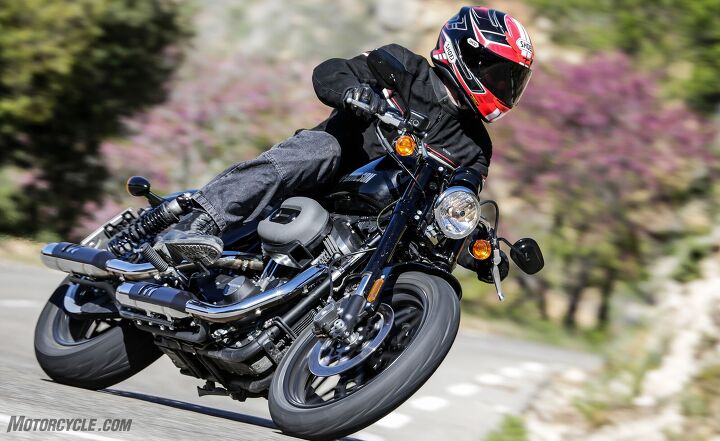

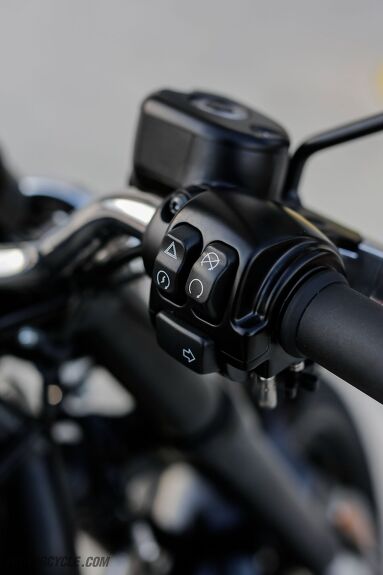

















































































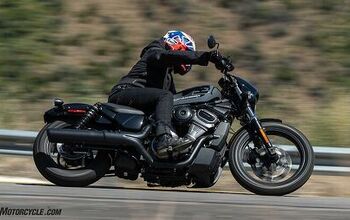
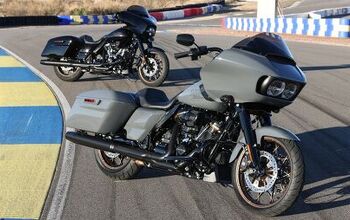







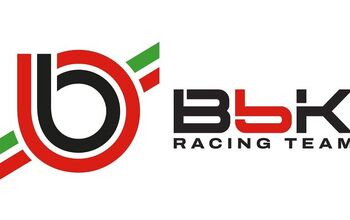




Comments
Join the conversation
mAN what a nice looking bike, reminds me of my 2002 Bonnieville.
Nice to see Harley made such a thing.
Hmm. So, let's see, My 1974 Ducati 750 gt (bought it new when I was a kid) weighs about 160 lbs less than the roadster; has more ground clearance; even a bit more suspension travel. Delivers plenty of torque and is incredibly comfortable to ride. Went to HD to check out Roadster and even though am a Sportster fan in general... going to clean up my Ducati and drive it. Keep trying HD.